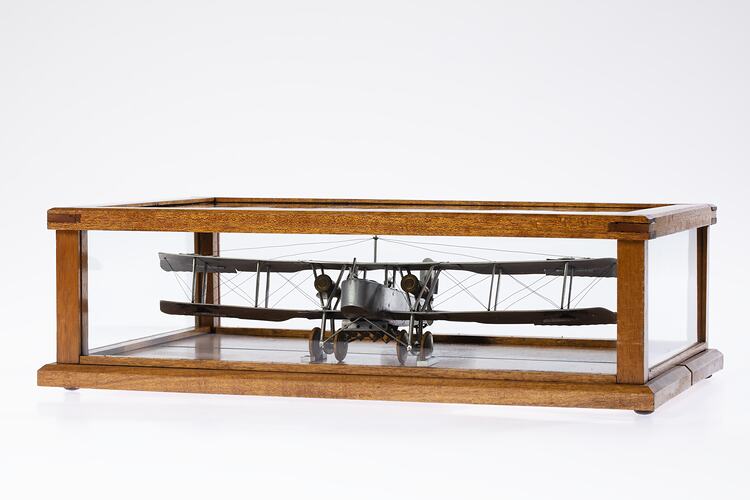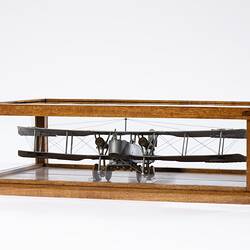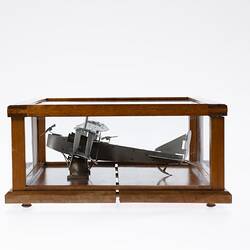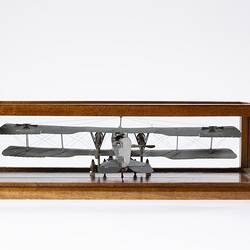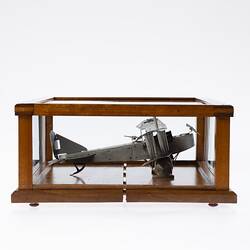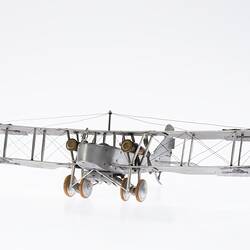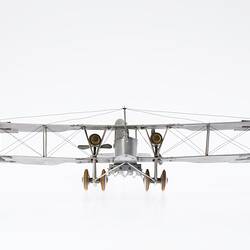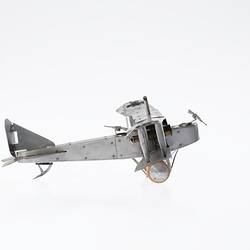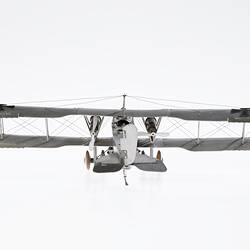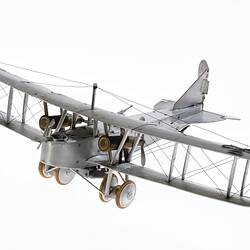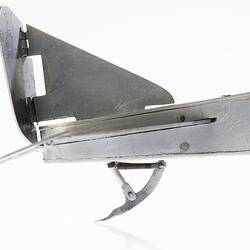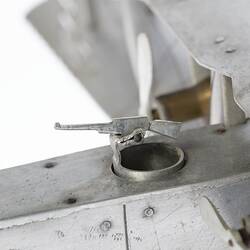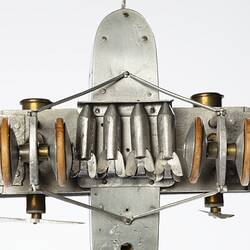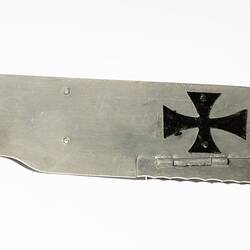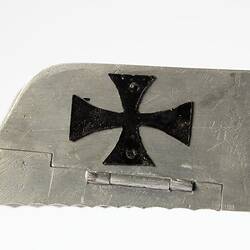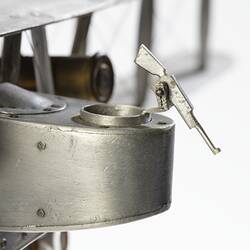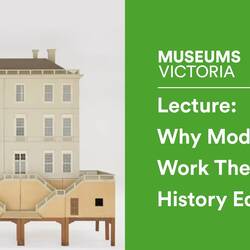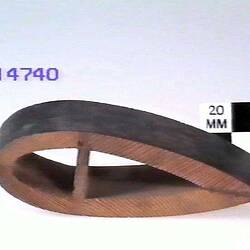Summary
Alternative Name(s): Plane Model, Aeroplane Model
Model of a World War I German bomber, likely a Gotha, scale approximately 1:50. It is believed to have been made by Private John Henry Stedwell in France while he was waiting to return to Australia after the war ended. It was donated to the Returned and Services League by Mrs D. E. Stedwell, assumed to be his wife Dinah Ellen Stedwell, whom he married in 1925. In 1986 the RSL donated the model to Museums Victoria.
Private Stedwell, service no. 3939, was born in Sydney and enlisted in Melbourne on 24 July 1915 when a butcher, aged 23. His next of kin was his grandmother Elizabeth Stedwell, who lived in Sandringham; later his wife, Mrs D. E. Stedwell, also lived in Sandringham, adding weight to the identification of Private John Henry Stedwell as the maker.
Private Stedwell embarked from Melbourne on the HMAT A40 Ceramic on 23 November 1915, initially with the 12th Battalion, 8th Reinforcements. He was based in the Middle East, where in March he was transferred to 5th Division Headquarters. The 5th Division to France in June 1916, landing at Marseilles, and took part in major actions including the Battle of Fromelles, Somme, Polygon Wood and Villers-Bretonneux. After the war the 5th Division headquarters were based in Oisemont, then moved Favril, Cartignies and Solre le Chateau, France. Around March the 5th Division Headquarters moved to Walcourt, Belgium. Private Stedwell may have made the model in any of these locations, or during his stay in hospital. In March 1919 he was admitted to the 39th General Hospital, France, then moved to the 1st Australian Dermatological Hospital in Bulford, England, 'VD 20'. He was discharged in May and embarked for Australia in July on the HMAT Orita, disembarking on 6 August 1919.
The Gotha bomber entered service in August 1917 and was used until 1918. It used a bi-plane wing structure common in the early years of aviation. Gothas were used actively along the Western Front, where Private Stedwell was serving, and also took part in bombing raids in London in September 1917 (described by historian Raymond Fredette as the first blitz), in which Gothas were lost.
Physical Description
Model of a bi-plane made of metal, largely aluminium sheet. The plane has two pairs of wheels at the front (possibly wood encased in metal) and no roof on the cockpit. Inside a wood and glass display case. The two propeller bodies are each made from a single brass-cased bullet. Each bullet still has an intact body and intact primer on its base. The projectile (nose) of each has been removed and replaced with a disc into which a propeller on a pin is mounted. It is not known if the propellant has been removed from the body, although this is likely to have occurred when the projectile was removed.
More Information
-
Collection Names
Returned and Services League (RSL) Collection, Military Memorabilia Collection
-
Collecting Areas
-
Acquisition Information
Purchase
-
Maker (Probable)
Private John H. Stedwell - Australian Imperial Force (AIF), France, 12 Nov 1918-12 Mar 1919
-
Previous Owner
Mrs D. E. Stedwell, Sandringham, Greater Melbourne, Victoria, Australia
-
Classification
-
Category
-
Discipline
-
Type of item
-
Case Dimensions
514 mm (Width), 335 mm (Depth), 158 mm (Height)
Case only.
-
Object Dimensions
250 (Length), 420 (Width)
Approx. 250 mm length & 420mm wing span.
-
References
Identification of Dinah Ellen Stedwell: Lorimer/Rosser family tree, accessed Ancestry, [Link 1] 7/8/2019. The identification concurs with other family trees published on Ancestry. Military Factory web site [Link 2] accessed 7/8/2019. History Net [Link 3] accessed 7/8/2019, from original article by R. L. O'Connell, The Gotha Bomber and the Origins of Strategic Bombing, The Quarterly Journal of Military History, vol.3, no.1, Autumn 1990. See also: Australian Imperial Force unit war diaries, 1914-18 War: AWM4 Class 1 - Formation HeadquartersAWM4 Subclass 1/50 - General Staff, Headquarters 5th Australian Division.
-
Keywords
Bombers, Military Aircraft, Model Aeroplanes, World War I, 1914-1918
